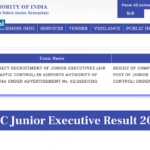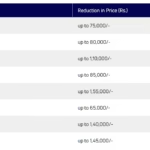In a major move shaping the future of enterprise networking, Hewlett Packard Enterprise (HPE) has secured approval from the U.S. Department of Justice (DOJ) to move forward with its $14 billion acquisition of Juniper Networks. This landmark settlement—reached in June 2025—comes after months of regulatory pushback, legal uncertainty, and market speculation.
The deal marks one of the largest tech mergers in recent years and is poised to reshape the enterprise cloud, networking, and AI landscape. Here’s everything you need to know about what happened, why it matters, and what it means for the future.
Background: A $14 Billion Strategic Bet
HPE announced in early 2024 its intent to acquire Juniper Networks for $40 per share in an all-cash deal, valuing the company at approximately $14 billion. The goal? To build a powerhouse capable of competing more aggressively against networking giants like Cisco and scaling its AI-native infrastructure offerings.
Juniper brings significant assets to the table, including:
- Mist AI, an AI-driven cloud platform for wireless network management
- Strong enterprise routing and switching portfolios
- Expertise in data center networking and edge computing
This acquisition would position HPE to deliver a unified AI-cloud-network stack, spanning from edge devices to multi-cloud platforms.
Regulatory Roadblock: DOJ Steps In
In January 2025, the U.S. DOJ filed a lawsuit to block the merger. Their concern: reduced competition in the wireless networking market.
The DOJ argued that:
- HPE (via Aruba) and Juniper were the second and third largest players in the U.S. WLAN market.
- Their merger would leave only Cisco and the new HPE–Juniper as dominant players, effectively reducing competition.
- This could lead to higher prices, less innovation, and fewer choices for enterprise customers.
The case was heading for trial in July 2025—until both parties reached a last-minute settlement.
Settlement Details: What HPE and Juniper Agreed To
To address the DOJ’s concerns and avoid prolonged litigation, HPE and Juniper agreed to the following key terms:
1. Divestiture of Aruba Instant On
HPE will divest its “Instant On” business line, which serves small and medium businesses with simplified WLAN solutions. The DOJ wants this business spun off to a viable third-party buyer within 180 days of the court’s approval.
2. Licensing of Mist AI
Juniper will license its Mist AI platform, including its source code, to third-party competitors through a non-exclusive, perpetual license.
This ensures that other companies can still offer AI-powered WLAN tools, preventing HPE from monopolizing the Mist AI technology.
3. DOJ Oversight and Compliance
The DOJ will appoint an independent monitor to oversee compliance with the divestiture and licensing terms. The settlement avoids the need for a trial and accelerates the timeline for integration.
Why This Deal Matters
AI-Native Networking Is the Future
The combination of HPE’s cloud infrastructure and Juniper’s Mist AI gives the company a powerful edge in the AI-native networking market. Mist AI can proactively manage wireless networks, reduce outages, and even auto-correct performance issues—making it an attractive tool for enterprise IT teams.
Strengthening Hybrid Cloud Capabilities
With the integration of Juniper’s data center and service provider networking solutions, HPE enhances its hybrid cloud offerings. This gives customers more flexibility to deploy across public, private, and edge environments.
Global Competition Heats Up
The deal strengthens HPE’s position against not just Cisco, but also Chinese competitors like Huawei, especially in Asia-Pacific and emerging markets. With regulatory hurdles cleared, HPE is expected to aggressively expand globally.
Challenges Ahead
While the settlement clears the path, challenges remain:
- Integration Risks: Merging large-scale hardware, software, and sales operations is complex.
- Talent Retention: Juniper’s engineering and AI talent must be retained to preserve innovation momentum.
- Market Response: Competitors may respond with price cuts or new AI-powered offerings.
Despite these hurdles, HPE appears confident that the long-term synergies outweigh the short-term challenges.
Industry Reaction
Investors
Investors welcomed the news, with HPE’s stock rising by nearly 6% following the DOJ settlement announcement. Analysts have projected $450–500 million in potential synergies over the next three years.
Customers
Enterprise customers now expect a unified AI-first network stack from HPE, including better integration across storage, servers, switches, and WLAN devices.
Rivals
Cisco may feel the pressure to accelerate its AI integration across its Meraki and Catalyst product lines. Meanwhile, smaller WLAN vendors may benefit from the Mist AI licensing, which could level the playing field.
What Comes Next
- Court Approval: The settlement must be approved by a federal court.
- Divestiture Process: HPE has 180 days to sell Aruba’s Instant On business.
- Mist AI Licensing: Licensing agreements must be finalized and offered transparently.
- Integration Begins: Post-approval, HPE will begin fully integrating Juniper’s operations into its portfolio.
By 2026, we can expect to see HPE rolling out a new generation of AI-optimized network solutions under a unified branding and go-to-market strategy.
FAQs
Q1: Why was the DOJ opposed to the HPE–Juniper deal?
Answer:
The DOJ feared the merger would reduce competition in the enterprise WLAN market, leaving only two major players—HPE and Cisco—controlling the majority of the market.
Q2: What does Aruba “Instant On” refer to?
Answer:
It’s HPE’s product line for small businesses that offers plug-and-play wireless networking. The DOJ demanded its divestiture to ensure competition remains in the SMB segment.
Q3: What is Mist AI, and why is it important?
Answer:
Mist AI is Juniper’s cloud-based platform for managing networks using artificial intelligence. It helps automate troubleshooting, optimize performance, and enhance security. Licensing it out ensures it’s not monopolized by HPE post-acquisition.
Q4: When will the acquisition be finalized?
Answer:
The finalization depends on court approval, which is expected in Q3 2025. After that, HPE will proceed with integration and divestiture.
Q5: What does this mean for Cisco and other competitors?
Answer:
Cisco faces stiffer competition, especially in AI-powered wireless networking. Smaller players may benefit by gaining access to Mist AI via licensing, giving them a new tool to compete in the enterprise market.
Conclusion: A Landmark Deal in Tech M&A
The DOJ’s approval of the HPE–Juniper merger, with clear conditions, reflects a measured approach to tech regulation. It balances concerns about competition with the benefits of innovation and scale.
For HPE, this acquisition marks a strategic leap into AI-first, hybrid-cloud networking. If executed well, it could make HPE a serious challenger to long-time industry leaders and reshape how networks are built, managed, and secured.
The next 12–24 months will be critical in determining whether this bold move leads to the next wave of enterprise technology disruption—or falls victim to the pitfalls of integration.










